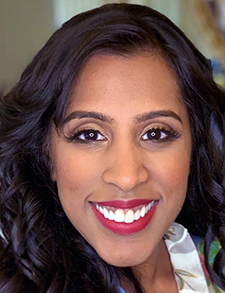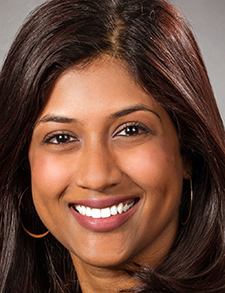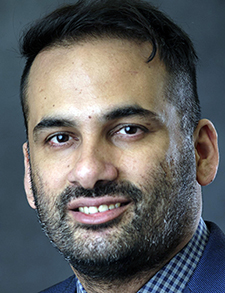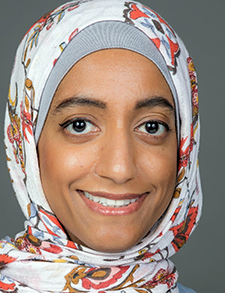 More than 10 years ago this magazine published an article by Winthrop Whitcomb, MD, MHM, a pioneer of hospital medicine and co-founder of the Society of Hospital Medicine, warning of the hazards of workflow interruptions for hospitalists, which he labeled a career satisfaction issue for clinicians but a safety and quality risk for their patients.1
More than 10 years ago this magazine published an article by Winthrop Whitcomb, MD, MHM, a pioneer of hospital medicine and co-founder of the Society of Hospital Medicine, warning of the hazards of workflow interruptions for hospitalists, which he labeled a career satisfaction issue for clinicians but a safety and quality risk for their patients.1
A decade later, the problem has surely gotten worse as hospital financial pressures and staff shortfalls push caseloads higher and job stresses drive burnout and premature retirement for doctors who have been pulled in too many directions in their work. Competing interruptions can come from nurses, the admitting department, the emergency department, labs and radiology, billing, patients and their families, and specialists—while hovering over the rest is the electronic health record and its myriad of pop-ups and alerts.
Meanwhile, communications technology continues to advance, with smartphones, texting, and pagers making it even easier to interrupt the doctor. Then add non-clinical responsibilities—documentation, departmental meetings, quality improvement, research, education, and even the Information Technology committee.
Some might say these interruptions and competing demands on the working hospitalist’s attention are just part of the job in today’s complex, fast-paced hospital environment. Multiple other parties throughout the hospital need the hospitalist’s attention to conduct their own jobs. But this kind of stress comes at a cost, with negative implications for both critical decision-making about patient care and the decision-maker’s personal well-being.2 Interruptions also impact efficiency, with fiscal consequences for what hospitalists are able to accomplish in their workday.
Connections to burnout

Dr. Williams
Gwendolyn Williams, MD, a hospitalist and immediate past president of the Medical Executive Committee at Sentara Careplex Hospital in Hampton, Va., president of the Hampton Roads Chapter of SHM, and a national spokesperson on professional well-being, burnout, and moral injury in the workplace, says that professionals are afraid to bring up what they are experiencing on the job. Their psychological needs in the workplace are not being met because they don’t want to be viewed as being unable to handle it.
“When a patient pulls me in different directions, I have (mentally) compartmentalized what I need to do for that patient. I understand why I’m doing it,” Dr. Williams said. “But when you’re asked to do what we could call multitasking or task switching, it causes stress and anxiety. It can also decrease empathy in our care because we’re being asked not to focus on the patient in front of us.”
If we keep adding more and more things to do, hospitalists are not just going to continue to bend, she said. “We’re going to break. People are leaving in droves from health care, not just nurses but also doctors.”

Dr. George
Telling hospitalists to just deal with all these pulls on their attention seems insufficient in a time of high burnout rates for hospitalists. Sonia George, DO, FACP, FHM, (@DrSoniaGeorgeDO) a hospitalist, the medicine clerkship director at Long Island Jewish Medical Center in New Hyde Park, N.Y., and a member of the executive council of SHM’s Hospitalist Well-Being Special Interest Group, has studied burnout among physicians and given regional and national talks on physician wellness since before the COVID-19 pandemic. “But when the pandemic hit, talk of burnout really came alive. The challenges that we as hospitalists face have changed dramatically over the last several years.”
There could be a lot of reasons for that, Dr. George said. “I feel like we’ve been pulled in so many different directions. Our responsibilities are ever-growing, with hospital metrics and throughput as key drivers of our day-to-day tasks. Our patients are also a lot sicker, and there are many elements of their social determinants of health that we are not quite equipped to handle.”
Dr. George was asked how the competing demands affected her personally. “That’s a great question. For me, I work half-time for the medical school as the medicine clerkship director, so I have administrative responsibilities on top of my patient care responsibilities.” But she gets protected time for her academic work, while other doctors often do not.
“If I didn’t have the protected time, I don’t think I could do my job as effectively. I would definitely be more stressed than I am now,” she said. “I’m sure it would not only impact work productivity, but it would affect me in my personal life and at home, especially if it required me to bring work home.” But when she’s on a clinical shift, caring for patients, the non-clinical demands on her attention are also great, which often leads to a longer workday. “Things need to get done, and I’m the only person that can get them done. Or else I have to figure out a way to delegate.”
It’s important for a hospital’s leadership to know how its hospitalists are being pulled in all these different directions, with all the interruptions, and to strategize ways this could be mitigated, Dr. George said. Changes need to come at an organizational level because the individual hospitalist can’t fix it all. “That’s why it’s really important to have supportive leadership.”
Dr. George’s hospital formed focus groups to talk about how to tackle some of these challenges, for instance, with an advanced care practitioner (ACP) who can support the hospitalist’s caseload and share responsibilities. If something comes up that is non-urgent for the patient, a nurse can reach out to the ACP to try to resolve the issue before escalating it to the attending.
Long Island Jewish Medical Center uses the Microsoft Teams Chat, which allows for real-time updates and other ways to assist hospitalists with some of their tasks, Dr. George said. “There are other ways we could definitely look into mitigating interruptions, but it has to start at the top. Communication and transparency are paramount. It’s also important for hospitalists to know they are not alone in their day-to-day struggles and that it’s not all on them to build up their resiliency.”
Managing all the demands

Dr. Dhillon
Gagandeep Dhillon (@MDrounds1), MD, MBA, assistant medical director at the University of Maryland Baltimore Washington Medical Center in Glen Burnie, Md., has been a hospitalist there for almost seven years. Before that, he worked in North Carolina on a seven-day on–seven-day off schedule of 12-hour shifts, where his workday started at 7 a.m. Sometimes he’d show up early to get a start on his patient lists, which ranged in number anywhere from 16 to the mid-20s.
“Let’s say I’m seeing a patient in a room and I’m in there for seven to 10 minutes. There’s a chance I might get five messages. So in my mind, even though I’m talking to the patient in front of me, I know that someone else is looking for me.” Dr. Dhillon believes that he can manage the multiple demands on his own time. “I’m not someone who gets really stressed about stuff. I’m good at multitasking. So I can do one thing here, a second thing there, a third thing there, and get all the jobs done. But I feel for certain practitioners, one more thing is a bridge too far.”
His current medical center uses a phone app that has helped to reduce the number of pages the doctor gets. “If I get 60, 70, 80 messages in the app that we use, I’m comfortable answering them. It doesn’t faze me,” he said. “On the other hand, the responsibility is on me to get to those messages ASAP.”
Along with the interruptions, the hospital expects certain other things from its hospitalists, such as the quality metrics they have to meet. “We should always be judged by certain numbers, certain metrics—but that also plays out in your mind in the sense that you’re thinking about how you need to hit the numbers,” Dr. Dhillon said. The University of Maryland Hospital recently instituted a 10-hour workday for its hospitalists, instead of 12 hours. Dr. Dhillon believes that has made a difference, with a less exhausting workday.
Different communication media

Dr. Jamal
Naznin Jamal, MD, FACP, FHM, medical director of the hospitalist program at Jefferson Regional Medical Center in Pine Bluff, Ark., said hospitalists getting pulled in all directions is pretty standard in her experience. “Usually, it’s harder for our physician colleagues coming out of residency and going straight into hospitalist practice. For the first time, they are managing an entire caseload by themselves, usually unaided. Whereas for a lot of mid-career physicians, we’ve found ways of efficiency, which we try to impart to them,” she said.
One of the tricks she learned as a hospitalist is to show up at work as early as she can. “The shift starts at 7 a.m., but early rounding happens to be more efficient than rounding later on. At 7 a.m., most of your patients are still in their beds, but by 9 o’clock they have gone for procedures or dialysis,” she said. “Another thing we have found is managing and preparing for discharge as much as possible the day before.”
Jefferson Regional Medical Center has also started using an electronic, HIPAA-compliant secure health messaging app. “We had a rule that anything that’s an emergency and life-threatening needed to be paged, but the secure messaging app can be used for the 80 to 90% of interruptions that are non-emergent. The downside to that is we’re now getting texted more often,” Dr. Jamal said.
The physicians thus have three different communication mediums—phone, page, and text. “Our hospital operators screen calls, and they know our preferences. We also have a rapid response team staffed by nurses with critical care experience, and they’re able to respond to some urgent requests.”
What else can hospitals and hospitalist groups do to mitigate the negative impacts of too many demands and interruptions? Could schedules be coordinated to allow certain times in the day when the doctors are not to be interrupted except for a true emergency, so they can focus on multidisciplinary team discussions, patient visits, medication reconciliation, or other complex decision-making? Can they simply turn off their phone at high-stakes moments? Could certain areas of the hospital be designated as “no-interrupt zones,” where they can work in peace, perhaps donning a bright yellow “do not disturb” vest to signal that status?
Of course, this requires clarity on what is truly urgent versus non-urgent. Might the technology itself be mobilized to help clarify these distinctions? A decade ago, Dr. Whitfield suggested that a 50-minute hour might enable hospitalists to do their clinical work uninterrupted by routine calls and pages, and then at 50 minutes after the hour turn their attention to backlogged pages and calls.
Leslie Flores, MHA, SFHM, in a blog post for SHM’s The Hospitalist Leader, suggested convening a process improvement initiative alongside nurses on the floor, working together to try to mitigate interruptions, acknowledging them as a problem everyone in the hospital owns a piece of.3
The doctor could also try to pre-empt interruptions by anticipating and addressing the needs of nurses and others in the hospital before they step forward with their questions. But it may be necessary to accept that interruptions are unavoidable, she wrote, concluding, “Strategies for reducing or more effectively dealing with interruptions are hard to come by.”
Larry Beresford is an Oakland, Calif.-based freelance medical journalist, specialist in hospice and palliative care, and long-time contributor to The Hospitalist.
References
- Whitcomb W. Workflow interruptions threaten patient safety, hospitalists’ job satisfaction. The Hospitalist website. https://www.the-hospitalist.org/hospitalist/article/125522/workflow-interruptions-threaten-patient-safety-hospitalists-job. Published December 2, 2013. Accessed February 24, 2024.
- Sloane JF, Donkin C, et al. managing interruptions to improve diagnostic decision-making: strategies and recommended research agenda. J Gen Intern Med. 2023;38(6):1526-31.
- Flores L. Working in an interruption-rich environment. The Hospital Leader: Official Blog of SHM. https://blog.hospitalmedicine.org/working-in-an-interruption-rich-environment/. Published November 10, 2015. Accessed February 24, 2024.